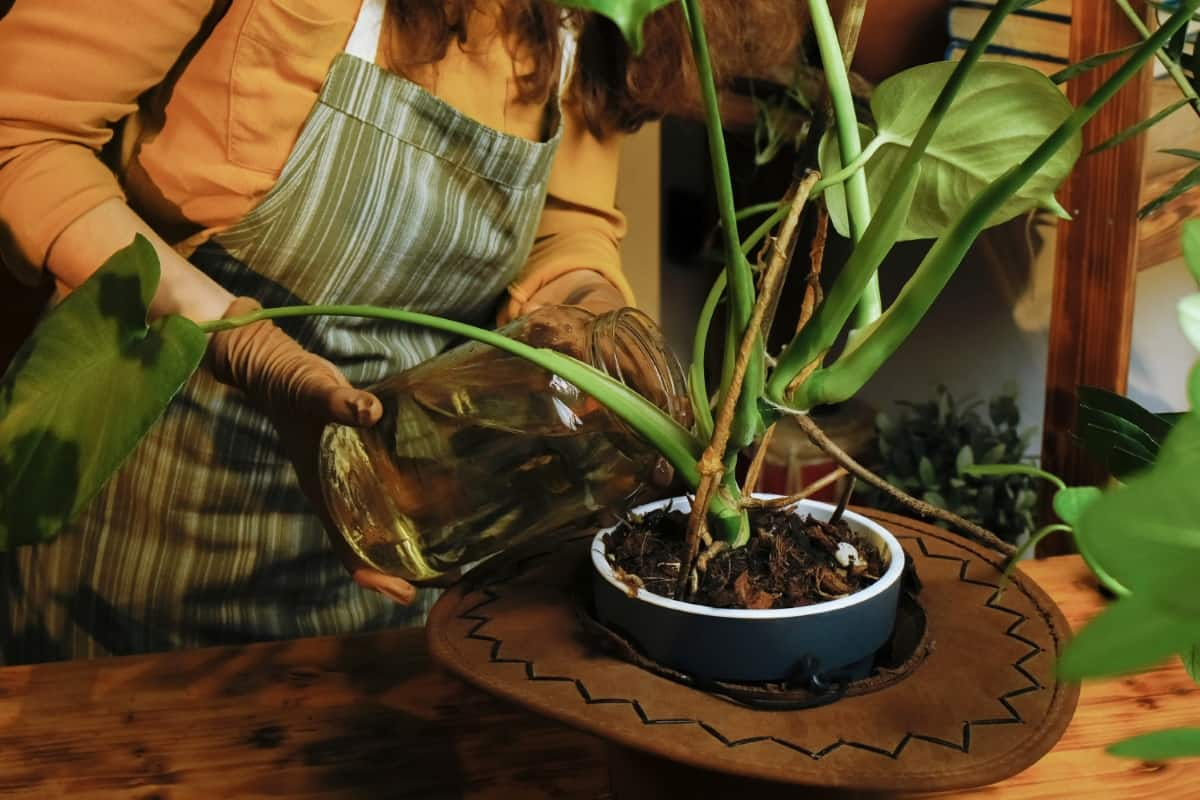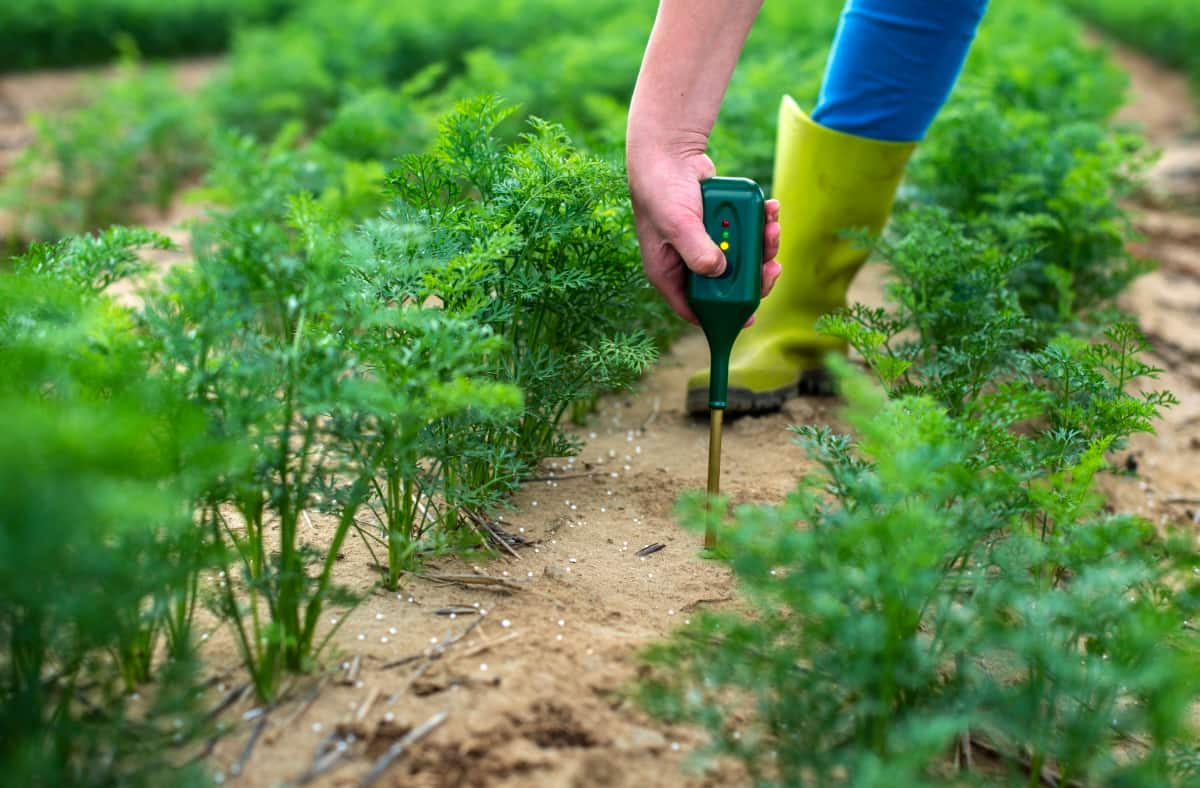For gardeners and farmers alike, understanding plant health is paramount. Healthy plants grow better, produce more, and resist pests and diseases. However, even the most diligent caretaker can encounter problems; one of the most common is nutrient deficiency. Nutrient deficiency symptoms in plants can vary widely, and understanding them is key to addressing and preventing the problem. This detailed guide will delve into specific deficiencies, including plant carbon deficiency, and how to identify and treat each.

How to Identify and Treat Plant Nutrient Deficiencies
How to Identify and Treat Iron Deficiency in Plants
Iron deficiency is common in high pH or waterlogged soils, often characterized by yellowing leaves with green veins, a condition known as chlorosis. This is because iron plays a crucial role in chlorophyll production, the substance that gives plants their green color and aids in photosynthesis.
To treat iron deficiency, consider using iron chelates, a soluble form of iron that plants can absorb. Applying organic matter or sulfur can also help lower soil pH, making iron more available. Remember, the goal is not only to treat the iron deficiency but also to adjust the conditions that caused the deficiency in the first place.
Common Signs of Nitrogen Deficiency in Garden Plants
Nitrogen is essential for plants as it’s a key component of proteins, DNA, and other critical plant structures. Plants lacking nitrogen often have stunted growth, and their older leaves turn yellow while young leaves remain relatively green. This is one of the most telling examples of nutrient deficiency in plants.
Organic matter is a good nitrogen source, so nitrogen deficiency is usually corrected by adding compost or manure. In more immediate cases, a fertilizer high in nitrogen can be used. Crop rotation is a method that can prevent nutrient deficiency in plants, specifically nitrogen. It ensures a well-balanced nutrient composition in the soil.
Solutions for Magnesium Deficiency in Crops
Magnesium, the central atom in the chlorophyll molecule, is crucial for photosynthesis. When plants lack this nutrient, their leaves often exhibit a symptom called interveinal chlorosis, where the area between the leaf veins turns yellow while the veins stay green. Adding Epsom salts, which is magnesium sulfate, can treat the deficiency. However, excessive potassium, calcium, or nitrogen in the soil can inhibit a plant’s ability to take up magnesium, so ensure these nutrients are balanced to prevent deficiency.
Causes and Remedies for Calcium Deficiency in Plant Leaves
Calcium is crucial for cell wall development. A lack of calcium can lead to deformation in new growth and cause problems like blossom end rot in tomatoes and peppers. The soil often contains plenty of calcium, but it’s unavailable to the plants due to inconsistent watering. Deep, regular watering and soil amendments like lime and gypsum can address calcium deficiencies.
Tips for Resolving Phosphorus Deficiency in Indoor Plants
Phosphorus is involved in energy transfer and storage in plants. Deficiency symptoms can include stunted growth and dark purple coloration on older leaves. A balanced fertilizer can correct the deficiency since phosphorus is often lacking in indoor potting mixes. Additionally, ensure the plant receives enough light, as low light levels mimic phosphorus deficiency symptoms.
Recognizing and Resolving Potassium Deficiency in Fruit Trees
Potassium is critical for various plant processes, including water regulation and disease resistance. Plants deficient in potassium often exhibit browning or yellowing on leaf edges; in fruit trees, the fruit may be small or poorly colored. Adding potash to the soil can correct a potassium deficiency. Moreover, using a balanced fertilizer and ensuring proper watering can help prevent this deficiency.
In case you missed it: Nutrients of Vermicompost: Explained with Simple Steps

Steps to Address Zinc Deficiency in Vegetable Gardens
Zinc is vital for enzyme function and protein synthesis. Symptoms of zinc deficiency often include stunted growth and interveinal chlorosis, much like magnesium deficiency but often with smaller leaves. Applying zinc sulfate or zinc chelate can remedy this deficiency. Maintaining the right soil pH, usually between 6 and 7, can also help improve zinc availability in the soil.
Dealing with Manganese Deficiency in Potted Plants
Manganese, like iron, is involved in photosynthesis. Symptoms of manganese deficiency can look similar to iron deficiency, with interveinal chlorosis appearing on younger leaves. To correct manganese deficiency, use manganese sulfate or a liquid foliar spray. However, correcting pH imbalances and avoiding over-liming are more sustainable long-term solutions.
Effective Methods to Overcome the Copper Deficiency in Crops
Copper is vital for many plant processes, including respiration and lignin production. A deficiency often results in stunted growth with dark green leaves and may cause the tips of new growth to die back. Copper sulfate can correct copper deficiency, but care must be taken as excessive copper is toxic to plants. Therefore, testing the soil before applying a copper amendment is essential.
Solving Sulfur Deficiency in Ornamental Plants
Sulfur is a crucial part of certain amino acids and vitamins in plants. A deficiency can result in stunted growth and yellowing of young leaves, unlike nitrogen deficiency, which affects older leaves first. Adding sulfur-containing amendments such as gypsum or elemental sulfur can correct this. However, these amendments can also lower soil pH, so they should be used cautiously.
Deficiency Symptoms of Carbon, Hydrogen, and Oxygen in Plants
Unlike other nutrients, carbon, hydrogen, and oxygen are rarely deficient as they are obtained from the air and water. However, certain environmental conditions can limit their availability. For instance, waterlogged soil can cause a deficiency in oxygen, leading to root death. Water stress can also limit the availability of hydrogen and oxygen. Overwatering or underwatering can lead to similar symptoms, such as wilting, browning, and root death. Correcting these conditions by ensuring proper watering can help address these deficiencies.
In case you missed it: Transform Kitchen Waste into Nutrient-Rich Organic Fertilizer: A Step-by-Step Guide

Conclusion
Understanding and managing nutrient deficiencies in plants is an ongoing process. Gardeners and farmers can swiftly address issues by familiarizing themselves with nutrient deficiency symptoms, ensuring plants’ health and productivity. It’s always important to remember that prevention is better than cure.
Regular soil testing, balanced fertilization, appropriate watering, and crop rotation are excellent strategies for preventing nutrient deficiencies and maintaining healthy plants. However, when deficiencies occur, knowing how to treat nutrient deficiency in plants can make the difference between a failing plant and a thriving one. Keep a close eye on your plants, respond to their needs, and they will reward you with vigorous growth and abundant yields.
- Feed Your Flock for Less: Top 10 Tips to Save on Chicken Feed
- Ultimate Guide to Ossabaw Island Hog: Breeding, Raising, Diet, and Care
- Hatching Answers: The Top 10 Reasons Your Chickens Aren’t Laying Eggs
- Eggs and Economics: Breaking Down the Cost of Raising Backyard Chickens
- Defend Your Greens: Proven Methods to Keep Iguanas Out of Your Garden
- Ultimate Guide to Cinnamon Queen Chicken: A Comprehensive Guide for Beginners
- Ultimate Guide to California Tan Chicken: Breeding, Raising, Diet, Egg-Production and Care
- Ultimate Guide to Marsh Daisy Chicken: Breeding, Raising, Diet, and Care
- 10 Types of Chicken Farming Businesses You Can Start for Profits